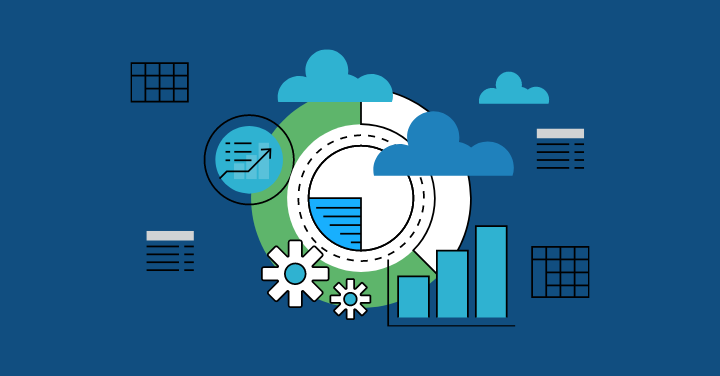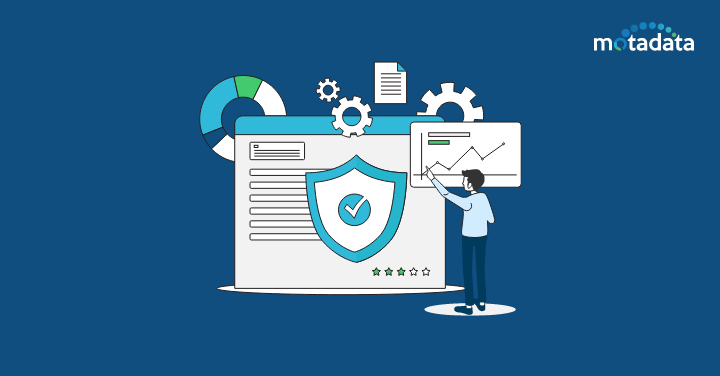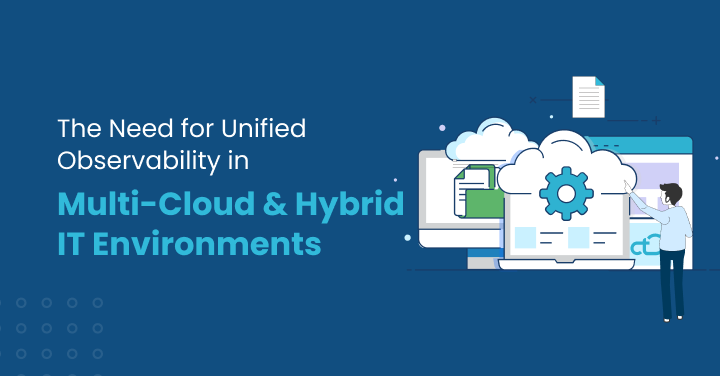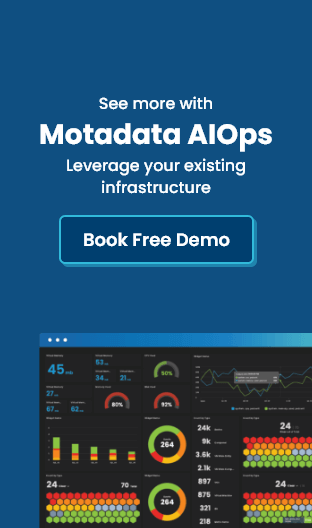Introduction
Ensuring optimal network performance has become essential as organizations rely heavily on digital infrastructure, including cloud infrastructure. Monitoring software is now a cornerstone for maintaining a healthy computer network, enabling IT teams to track network traffic, detect faults, and act swiftly before issues escalate.
Whether your business operates on-premises, in the cloud, or across hybrid environments, advanced network monitoring delivers actionable insights that safeguard uptime and support seamless user experiences. This article explores how AI and modern monitoring tools are revolutionizing network oversight and performance management.
Understanding Network Monitoring and Its Importance in Modern IT
Network monitoring is a foundational element in managing IT infrastructure. It involves tracking the status and performance of network components and devices to ensure prompt detection of issues like latency or packet loss.
Continuous performance monitoring not only supports reliable response times but also keeps business operations running smoothly.
Today’s organizations depend on effective real-time network monitoring to oversee complex computer networks within complex networks that span physical, virtual, and cloud-based assets.
By revealing actionable data, these systems empower IT teams to fix problems before they disrupt productivity.
Let’s break down the core concepts shaping network monitoring’s role in IT.
Defining Network Monitoring and Core Concepts
A robust monitoring system is designed to oversee the health and performance of networks by collecting, analyzing, and reporting on vast amounts of network data.
Using a network monitoring tool, IT administrators can monitor routers, switches, firewalls, and endpoints for real-time status and emerging problems.
Data collection relies on protocols such as Simple Network Management Protocol (SNMP), syslog, and ICMP, ensuring comprehensive oversight of all network management protocol activities.
A good network monitoring tool provides:
- Real-time visibility and alerting on network events.
- Support for multiple device types and vendors.
- Automated configuration management and performance benchmarks.
These tools work by continuously polling or listening for updates from network devices, then filtering and presenting this data through dashboards and reports.
Key features should include customizable dashboards, automated alerts, and integration with other IT operations tools.
By leveraging these core capabilities, organizations can identify root causes and maintain optimal network health.
Why Network Monitoring Is Essential for Organizations
Performance metrics such as bandwidth usage, latency, and error rates offer a window into network health.
When monitoring systems track these indicators, IT teams can proactively manage network problems and address them before they escalate.
Common network issues detected through monitoring include device failures, link outages, configuration errors, and excessive bandwidth consumption.
Packet loss and high response times can degrade application performance, but with the right monitoring in place, these issues are flagged early. Automated network monitoring helps organizations minimize downtime and improve service delivery.
With comprehensive visibility, organizations can also optimize resource allocation and streamline business operations through a monitoring service.
Monitoring supports compliance requirements and provides detailed reports for audits.
Ultimately, investing in a network monitoring tool reduces troubleshooting time, improves user experience, and protects against revenue loss from unexpected outages.
The Evolving Role of Network Monitoring in Digital Transformation
As digital transformation accelerates, network visibility becomes more challenging and more crucial. Traditional monitoring methods often relied on periodic checks and manual analysis, which struggle to keep pace with the complexity and dynamism of modern IT operations.
Real-time network monitoring now provides continuous insights, instantly detecting performance degradation or security threats.
By integrating active testing tools and endpoint agents, organizations gain a holistic view of application performance and network health across on-premises, cloud, and hybrid environments.
This evolution empowers IT teams to respond rapidly to issues and align network operations with business objectives.
Modern monitoring ensures that business operations are supported by a resilient, scalable, and secure network infrastructure.
How AI is Revolutionizing Network Monitoring?
Artificial intelligence has become a game-changer for network performance monitoring. AI-powered monitoring leverages machine learning and advanced algorithms to analyze network traffic, predict anomalies, and automate corrective actions.
This shift eliminates the slow, manual processes of traditional monitoring software, delivering faster threat detection and resolution across the entire network.
The result is a monitoring system capable of learning from historical data, identifying subtle signs of performance degradation, and launching automated responses—strengthening both network health and security posture.
What Sets AI-Powered Monitoring Apart from Traditional Tools
AI-powered monitoring introduces a dynamic approach to network management. Unlike traditional systems, which rely on static thresholds and manual intervention, AI-based monitoring systems operate in real time and adapt to evolving network conditions.
Here’s what makes them stand out:
- Continuous learning from performance data for smarter anomaly detection.
- Automated responses to network issues minimize downtime.
- Real-time traffic analysis that adapts as network traffic changes.
- Advanced integration with security monitoring for rapid threat identification.
With these capabilities, AI-powered tools can process vast amounts of network data and automatically fine-tune alerting and remediation strategies.
“AI moves IT from reactive to proactive, reshaping how we protect and optimize our networks,” says industry thought leader Steve Moore.
This shift leads to faster resolution of potential problems, improved user experience, and greater overall reliability.
Machine Learning Techniques Used in Modern Network Monitoring
Machine learning underpins today’s most advanced monitoring software, enabling rapid detection of performance anomalies and security threats.
These systems ingest network traffic, recognize patterns, and flag behavior that deviates from established baselines.
For example, anomaly detection algorithms can identify unauthorized access or unusual data flow indicative of security breaches.
Predictive analytics leverages historical data to forecast potential problems, allowing IT to intervene before users notice degradation.
Supervised and unsupervised learning techniques help refine the monitoring system’s ability to distinguish between harmless fluctuations and genuine threats.
Key features of machine learning-driven monitoring include:
- Automated detection of new devices or traffic patterns.
- Continuous adaptation as network configurations evolve.
- Enhanced visibility into application performance and endpoint behavior.
Together, these approaches ensure IT teams remain ahead of emerging network issues.
The Impact of AI on Automated Problem Detection and Resolution
AI-powered monitoring systems excel at automated problem detection and resolution.
By constantly analyzing performance data, these systems can pinpoint root causes of network degradation or security incidents with unprecedented speed.
When AI identifies a potential threat—such as a spike in bandwidth usage or an unauthorized device—it can trigger automated responses like reconfiguring network settings or isolating the affected segment.
This rapid reaction minimizes response time and reduces the risk of widespread outages or data breaches.
By automating both detection and mitigation steps, AI monitoring tools free IT staff from repetitive troubleshooting tasks.
They also continuously learn from each incident, refining their ability to distinguish between routine fluctuations and genuine network threats.
This cycle of detection, response, and improvement drives a more secure and reliable network environment.
Key Features of an Effective AI-Powered Network Monitoring Solution
A high-performing AI-powered monitoring system offers comprehensive features for both performance data analysis and security monitoring.
Look for solutions that provide real-time traffic analysis, intelligent alerting, and automated responses to network issues.
Advanced anomaly detection and predictive analytics are crucial for staying ahead of potential problems.
Additionally, seamless integration with existing IT infrastructure, customizable dashboards, and robust support for configuration management make these tools indispensable for maintaining optimal network health and availability.
Real-Time Traffic Analysis and Insights
Traffic monitoring is a core function of modern network monitoring tools. By providing real-time analysis of network traffic, these systems allow IT teams to detect bottlenecks, unusual activity, and shifts in traffic patterns as they happen.
Unlike periodic reporting, real-time monitoring continuously scans for performance issues and offers instant feedback on data flow.
This immediacy enables proactive troubleshooting, reducing the time between problem detection and resolution.
Real-time dashboards and visualizations of network traffic also help teams make informed decisions about bandwidth allocation and network optimization.
Key benefits of real-time analysis include:
- Rapid identification of traffic spikes and congestion points.
- Early warning of application performance problems.
- Immediate detection of unauthorized access or suspicious activity.
With these insights, organizations can maintain optimal performance and security across the entire network.
Predictive Analytics and Anomaly Detection
AI-powered monitoring systems leverage anomaly detection and predictive analytics to stay ahead of disruptions.
By analyzing historical data, these tools learn what normal network behavior looks like and can spot deviations that signal potential problems.
Predictive analytics forecasts performance degradation or emerging threats before they impact users.
This foresight enables IT teams to schedule maintenance, allocate resources, and address issues proactively—reducing downtime and boosting network health.
Anomaly detection is especially valuable for security monitoring, quickly flagging suspicious network traffic, unauthorized device connections, or unexpected bandwidth usage.
By combining historical baselines with advanced algorithms, AI-powered monitoring tools help organizations prevent both performance and security incidents, ensuring uninterrupted business operations.
Intelligent Alerting and Automated Responses
Intelligent alerting ensures IT teams are notified only when significant network issues or configuration changes occur, avoiding alert fatigue.
Automated responses can be configured so that the monitoring system takes action—such as adjusting network configuration or restarting a service—whenever a critical threshold is breached.
Key elements of intelligent alerting and automation include:
- Customizable thresholds for different devices and performance metrics.
- Integration with IT service management and incident response platforms.
- Automated remediation scripts for common problems.
- Alerts prioritized by severity and business impact.
These features maximize network availability and reduce manual interventions.
For best results, organizations should regularly review alerts, refine response strategies, and ensure the monitoring tool aligns with evolving business objectives and network architecture.
Setting Up an AI-Powered Network Monitoring System: Best Practices
Implementing an AI-powered monitoring system requires thoughtful planning and ongoing maintenance.
Start by mapping network visibility and defining key data collection points. Establish baselines and configure customizable dashboards for efficient performance monitoring.
Periodically review your monitoring strategy and use performance data to guide system optimization.
Following these best practices helps IT teams maximize network health, detect problems early, and adapt to changing business needs.
Planning Network Visibility and Data Collection Points
Strategic network mapping forms the backbone of effective monitoring. Identify all critical monitoring points—routers, switches, cloud endpoints, and wireless access points—and ensure they’re included in your monitoring system.
Data collection should be comprehensive, spanning real-time metrics and historical data for trend analysis.
Prioritize visibility for segments supporting business-critical applications and high-traffic areas.
Use network mapping features to visualize device connections and data flow, supporting troubleshooting and root cause analysis.
By thoroughly planning data collection points, you lay the groundwork for meaningful insights and efficient response to network issues.
Configuring Baselines, Alerts, and Dashboards
Establishing performance baselines and setting up intelligent alerts are crucial for responsive monitoring. Consider these best practices:
- Define normal operating thresholds for key metrics like latency, bandwidth usage, and error rates.
- Set up customizable dashboards for at-a-glance views of network performance.
- Configure alerts to trigger only for significant deviations or issues.
- Regularly adjust thresholds and dashboard layouts based on evolving business operations.
These steps help reduce false positives and ensure that IT teams are notified about genuine performance or security problems. Custom dashboards and tailored alerts keep monitoring actionable and focused on business priorities.
Periodic Review and System Optimization Strategies
Continuous improvement is essential to keep your monitoring system effective. Conduct periodic reviews of performance data and alert logs to identify patterns or recurring issues.
Optimization strategies include:
- Fine-tuning alert thresholds to match changing network conditions.
- Updating data collection routines as new devices or applications are added.
- Revisiting network maps to reflect infrastructure changes.
- Training staff on new monitoring features or security monitoring protocols.
By regularly assessing the monitoring system, you ensure that it remains aligned with your operational needs and mitigates risk through faster detection and resolution of problems.
Enhancing User Experience and Security through AI-Driven Monitoring
AI-driven monitoring dramatically improves both user experience and network security.
By proactively detecting performance degradation and security threats, these systems help IT teams resolve issues before users are impacted.
Continuous monitoring provides insights into response time, application performance, and network health, supporting seamless business operations.
Strengthened security monitoring protects against unauthorized access and emerging threats, keeping sensitive data safe and business reputation intact.
Proactively Detecting and Troubleshooting Performance Issues
Early detection is key to preventing performance issues that disrupt business operations. AI-powered monitoring tools continuously scan for signs of degradation, such as increased latency or unusual traffic patterns.
When a problem is detected, the system can automatically initiate troubleshooting steps—like isolating the affected device or analyzing root cause using historical data.
This proactive approach ensures that network problems are resolved before they affect users or critical applications.
By combining real-time monitoring with automated troubleshooting, organizations can minimize downtime and maintain high standards of service delivery.
Improving End-User Experience with Continuous Monitoring
Continuous monitoring is essential for delivering a reliable and responsive user experience. By tracking application performance, server health, and response time, IT teams can identify and resolve issues before they escalate.
Key metrics to monitor include:
- Response time for critical applications.
- Packet loss and latency on user-facing services.
- Network availability and uptime.
Consistent oversight means users enjoy uninterrupted access, fast application response, and minimal disruptions. Regular review of performance data helps IT teams spot trends and make improvements to support evolving user needs.
Strengthening Network Security and Responding to Threats
Effective network security monitoring relies on advanced threat detection and rapid incident response. AI-powered monitoring can identify suspicious activity and unauthorized access by analyzing traffic patterns and user behavior.
Core best practices include:
- Setting up automated alerts for potential security threats.
- Integrating with intrusion detection and prevention systems.
- Conducting regular audits of network configuration and access logs.
- Continuously updating detection rules based on emerging risks.
By responding promptly to threats, organizations prevent data breaches and maintain compliance with regulatory standards.
Automated security monitoring not only protects sensitive information but also supports business continuity by reducing the risk of disruptive attacks.
Conclusion
In conclusion, leveraging AI-powered monitoring is crucial for optimizing network performance and enhancing user experience.
By integrating advanced technologies such as machine learning and predictive analytics, organizations can proactively detect issues, troubleshoot performance bottlenecks, and ensure a secure network environment.
An effective monitoring solution not only provides real-time traffic analysis but also automates responses to potential threats, allowing IT teams to focus on strategic initiatives rather than constant monitoring.
As the digital landscape continues to evolve, investing in AI-driven tools will empower businesses to maintain robust network health while delivering exceptional user experiences.
If you’re ready to take your network monitoring to the next level, consider exploring AI solutions tailored to your organization’s needs.
FAQs:
Focus on performance metrics such as response time, packet loss, network availability, and application performance. These indicators help ensure your network operates efficiently, minimizing downtime and maintaining a high-quality user experience by quickly identifying and addressing issues as they arise.
AI-powered monitoring uses advanced security monitoring and threat detection algorithms to identify unauthorized access and abnormal traffic patterns in IP addresses in real time. By automatically responding to potential threats, these systems strengthen network security and help prevent data breaches before they cause harm.
Maintain monitoring system effectiveness by following best practices such as periodic review, regular system optimization, thorough network mapping, and establishing clear performance baselines. These steps ensure timely detection of issues, improved network health, and alignment with changing organizational needs.







